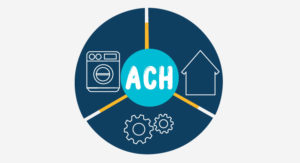How MasterCard is Using Open Banking to Make Fasten ACH Payments?

The payments industry is continuing to shift, and the latest technologies are bringing changes every single day. The switch from cash to checks and digital payments such as ACH has increased significantly. Especially in high-dollar or recurring payments such as rents and utility bills. These technological advancements provide a great experience for both merchants and consumers. Simply said, it provides better choices, simple experiences, and greater speeds when it comes to payments. But these advancements come with a couple of challenges.
Unsuccessful transactions create unnecessary friction in the process and force customers to find new methods. And in some cases, it can cause customers and merchants to pay a penalty fee. There’s always a risk of fraudulent accounts or account credentials being used.
To improve the process of these payments, Mastercard unveiled a new range of smart payment decisioning tools that help in reducing the friction of the process.
The new process named:
- Payment Success Indicator
- Payment Routing Optimizer
Rely on real-time bank data consented by a user to show payment indicators that raise successful payment completion rates and reduced transactional costs.
When it comes to ACH transactions, NACHA reported that the payment volume on the modern ACH Network increased by 7.7% in the third quarter of 2021. This shows that customers are responding positively to making direct payments from their bank accounts.
With the increased volume of ACH payments, there are a few challenges that may show the slow adoption of services, delaying the improved merchants and consumer experience.
- Settlement Risk: Lack of payment visibility leaves merchants exposed to potential returns, which adds friction to the customer-merchant relations. When a customer walks away from the payment process, the merchant of the surety of ACH Payments. This can increase the costs for merchants as it creates a costly return process.
- Security: At times, the merchant experience failed payments all because of a consumer adding fake or incorrect credentials.
Payment Decisioning: Having multiple ACH payment options such as the payment rail and settlement date, provides consumer choice and minimizes expense. However, a lack of greater visibility can add risk to payment settlement.
Minimizing Payment Failure, Boosting Cash Flow
So how does fixing these pain points play out in the market? According to research done by Mastercard, every time an ACH payment fails a merchant has to pay some fee. Fraud continues to be a major issue in payments. According to a 2021 fraud survey, checks and wire transfers are by far the most preferred methods that fraudsters use to make money. In recent times, the ACH debits have seen an increase in fraudulent activities as well.
Now add everything that open banking has to offer. By leveraging consumer-permissioned data, these challenges can be eliminated or reduced.
With the new Payment Status Indicator, the risk of failure is reduced by scoring the likelihood of a payment going through even before initiating it. Then with Payment Routing Optimizer, payment originators are provided a recommendation for the most optimal payment day and payment rail to choose from. This increases the chances of a payment succeeding and offering great speed.
Better Data, Better Decision Making
With smart data comes better decision-making. This is true in almost every part of life, and it’s especially true in handling account-to-account payments. Leveraging machine learning and predictive modeling, Payment Success Indicator, and Payment Routing Optimizer can help in eliminating ACH payment failure. This can easily improve cash flow and improve the bottom line while creating a more positive experience for customers.
Customers are using more and more apps and services that leverage digital checkout and payment methods. It’s more crucial than ever to minimize fees and reduce costs, reduce the risk of fraud, non-sufficient funds, and returns and make payment settlement a cost-effective process.
By leveraging consumer-permission banking data, the Payment Success Indicator offers the payment originator a score out of 10 future calendar days, and individual scoring of each of these days. Scoring is based on real-time balance and historical behavioral risk patterns. This system is used to evaluate the likelihood that a given amount will settle successfully.
If there’s a payment that has a high risk of settlement, or non-sufficient funds over a specific time period, then the merchant can use the information available to request an alternative payment method.
The analytics engine then provides a score separating the risk factors across 4 separate tiers, providing merchants with the advantage of maximizing available customer data. This helps in better decision-making.
Here’s a breakdown of risk levels:
- Tier 1: Highly likely to settle
- Tier 2: Likely to settle
- Tier 3: Less likely to settle
- Tier 4: Do not process, Errors present
Each score includes weighted reasons for the scoring. Some common factors include:
- Account balance
- NSF history
- Consumer spending
- Consumer deposits
- Other financial data
Payment Routing Optimizer will provide the payment rail, cost, and payment date suggestions based on the scoring provided by the Payment Success Indicator.
The technology aims to eliminate the friction of the process of choosing between digital payment options with future updates of the Payment Routing Optimizer including a debit card option.












